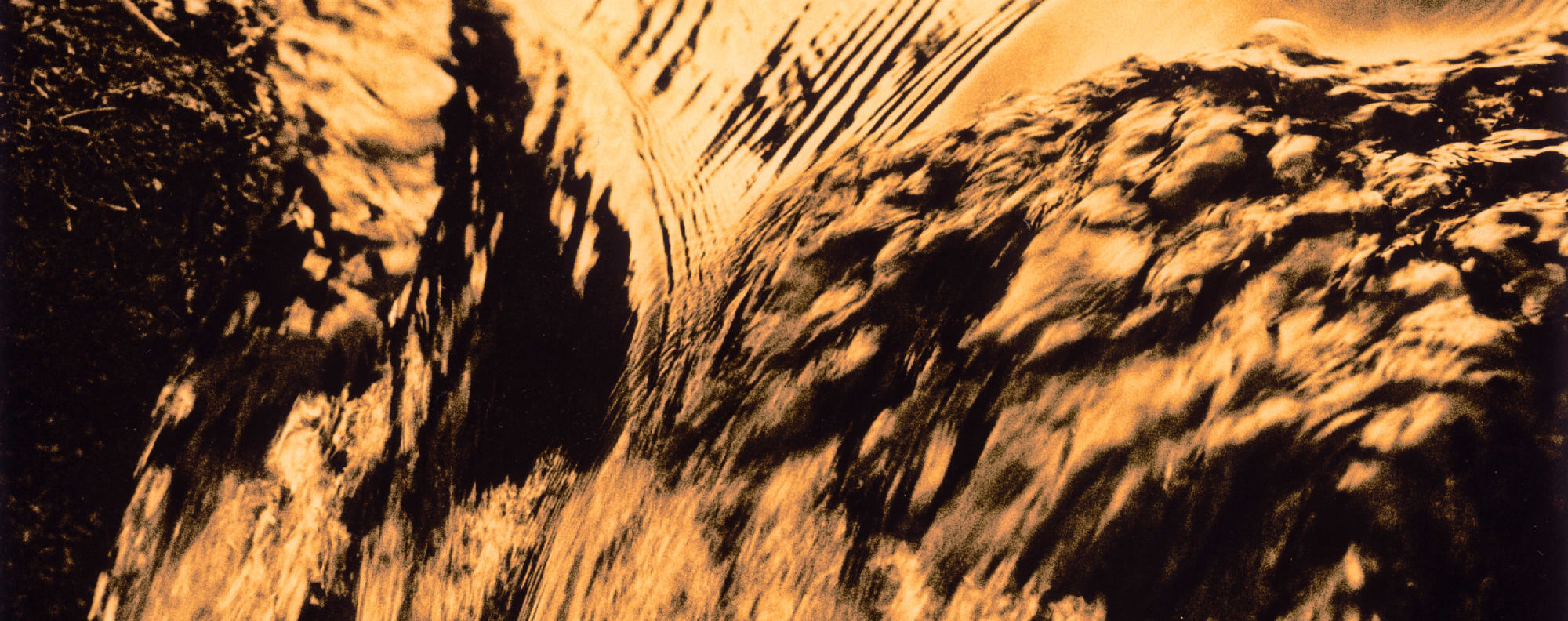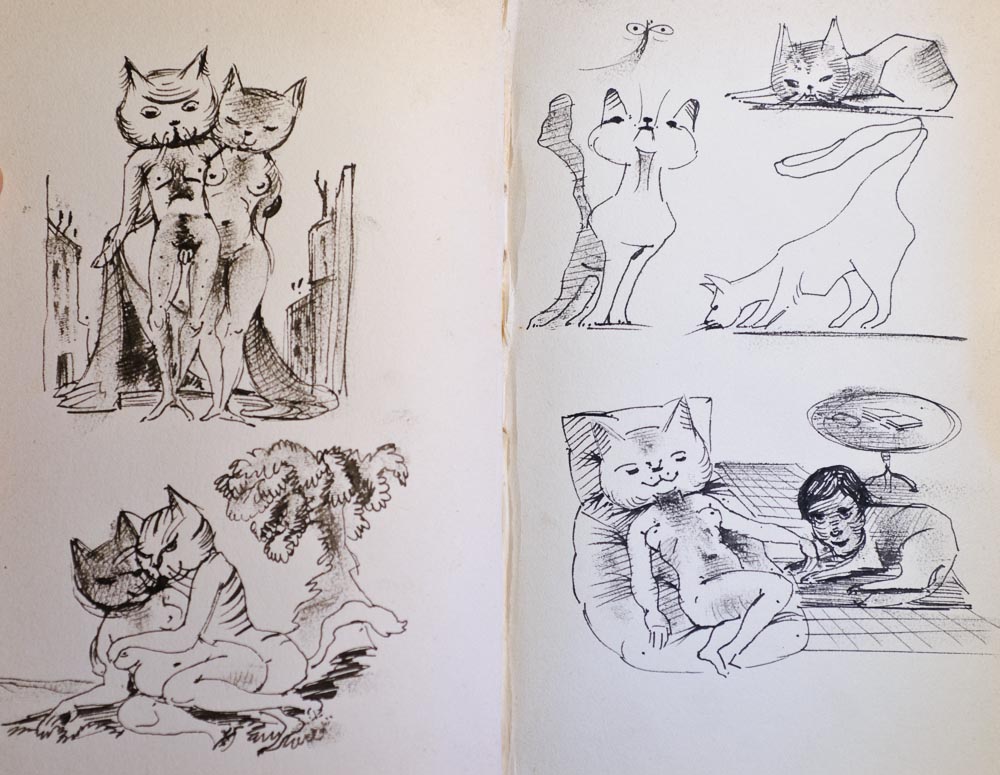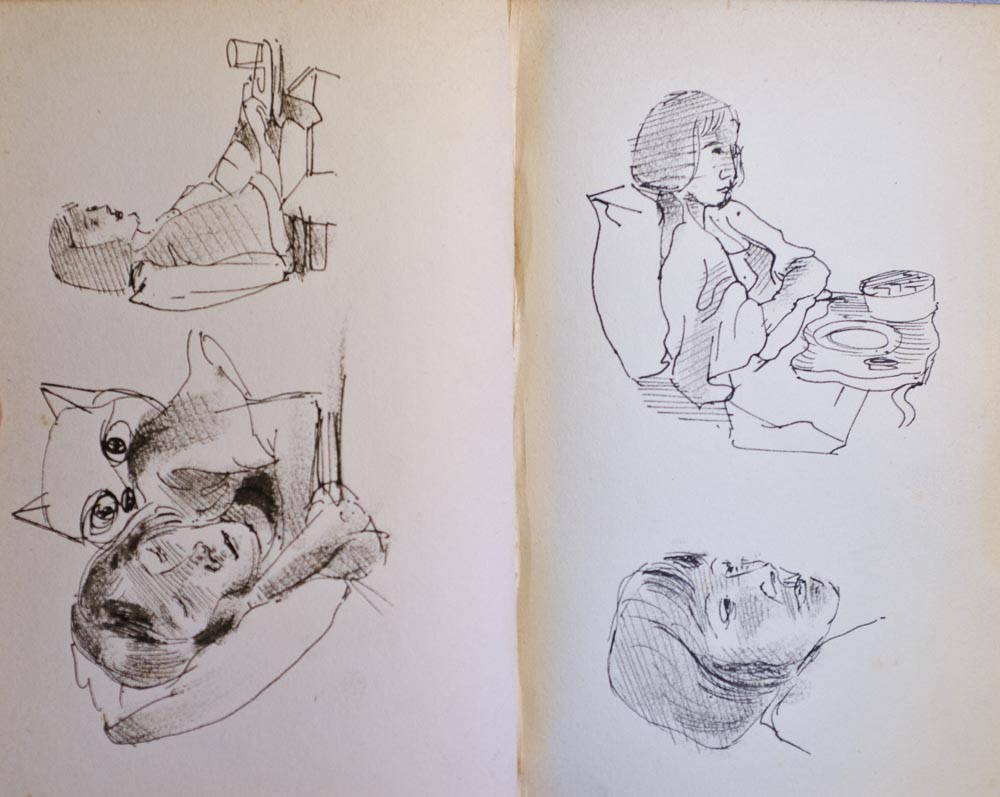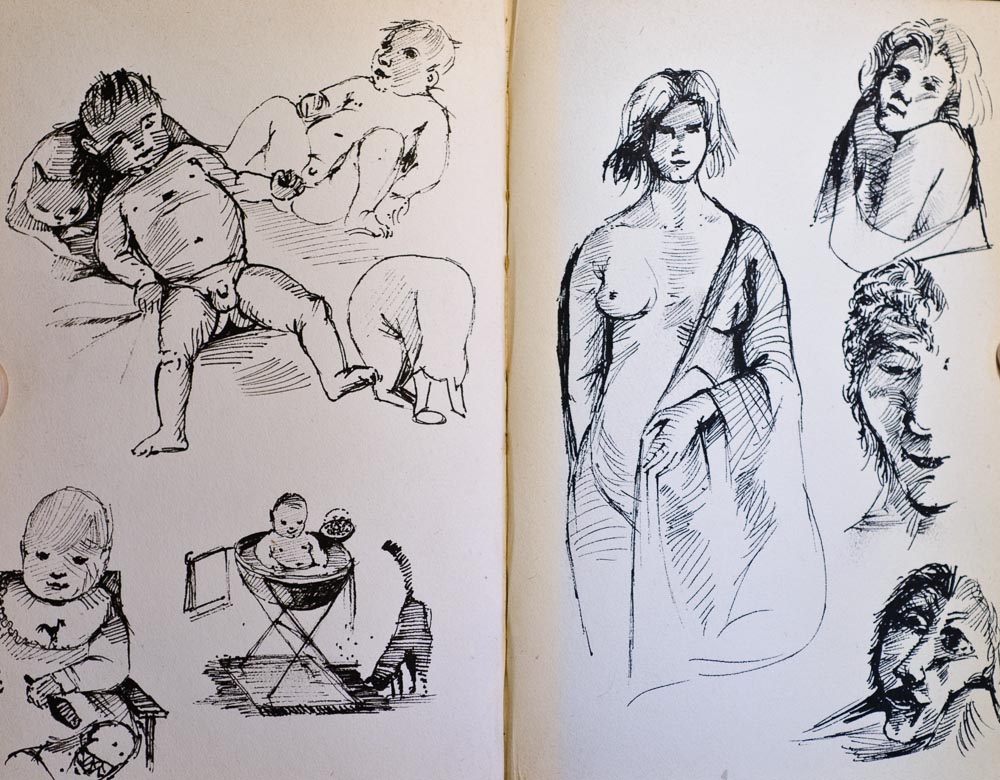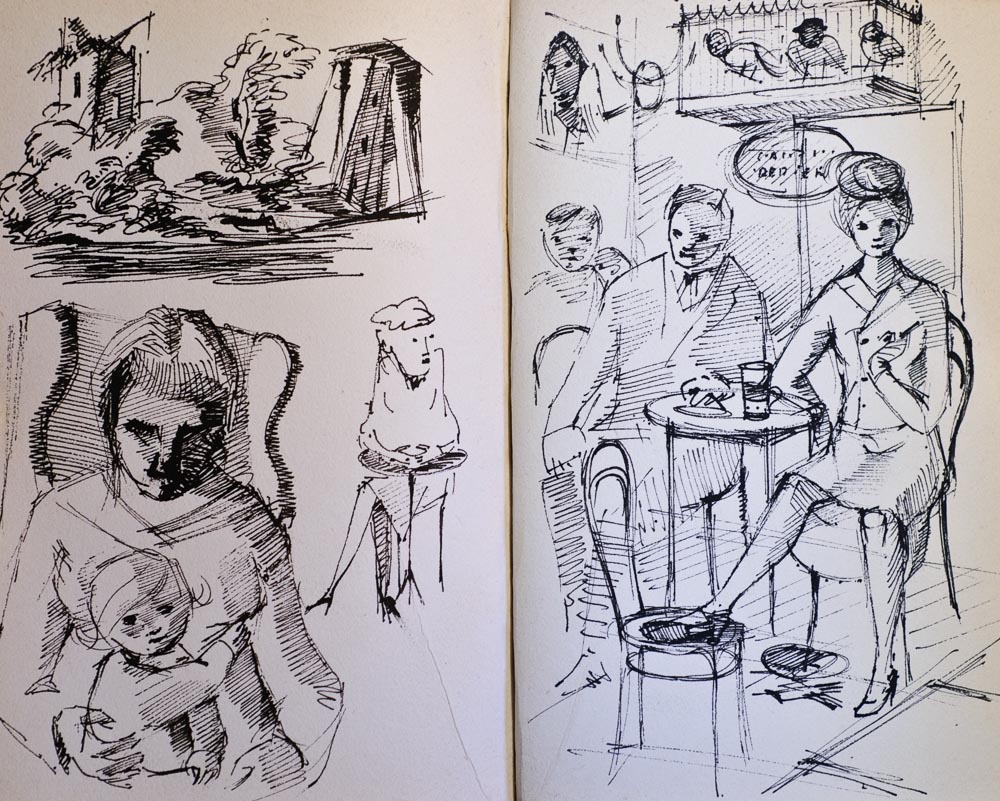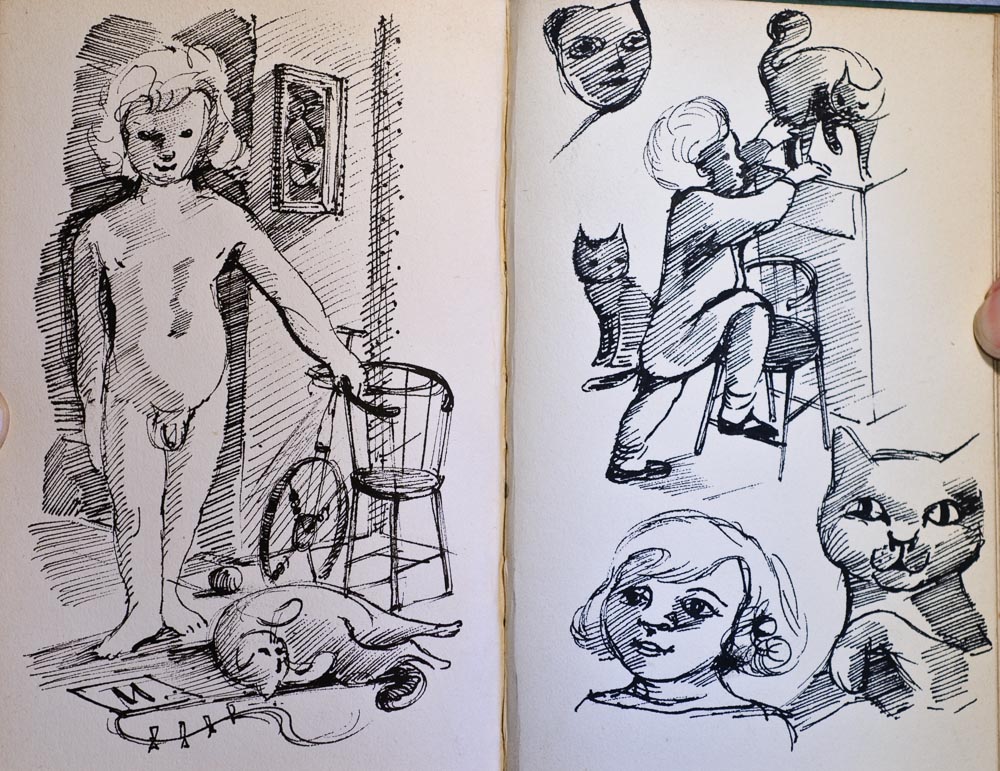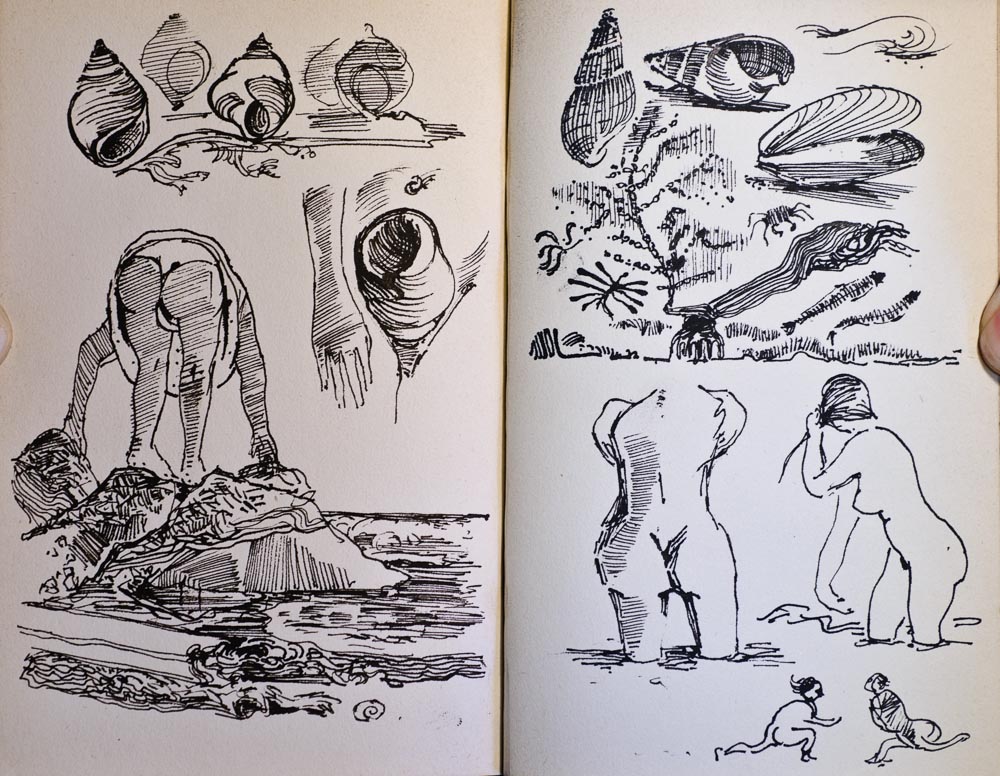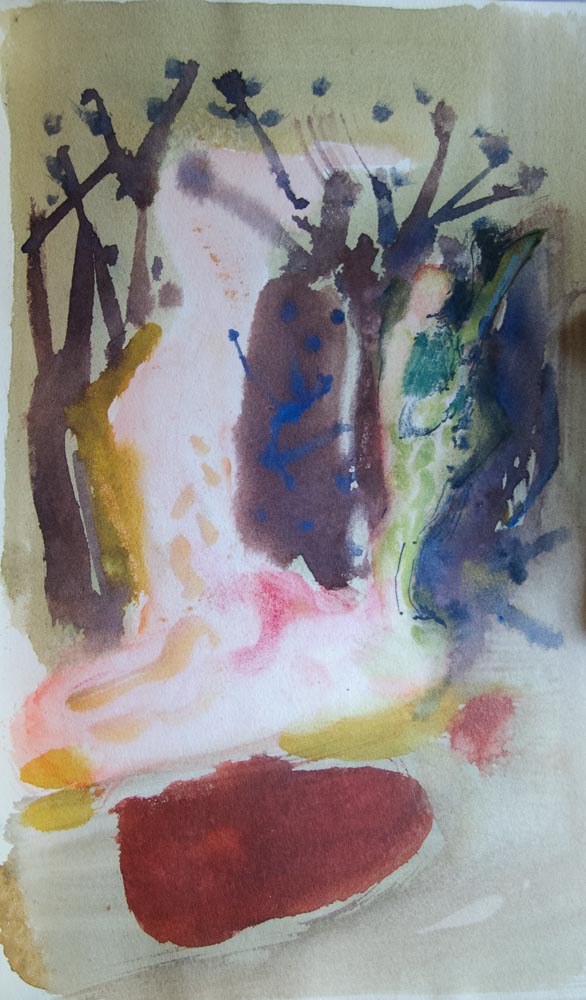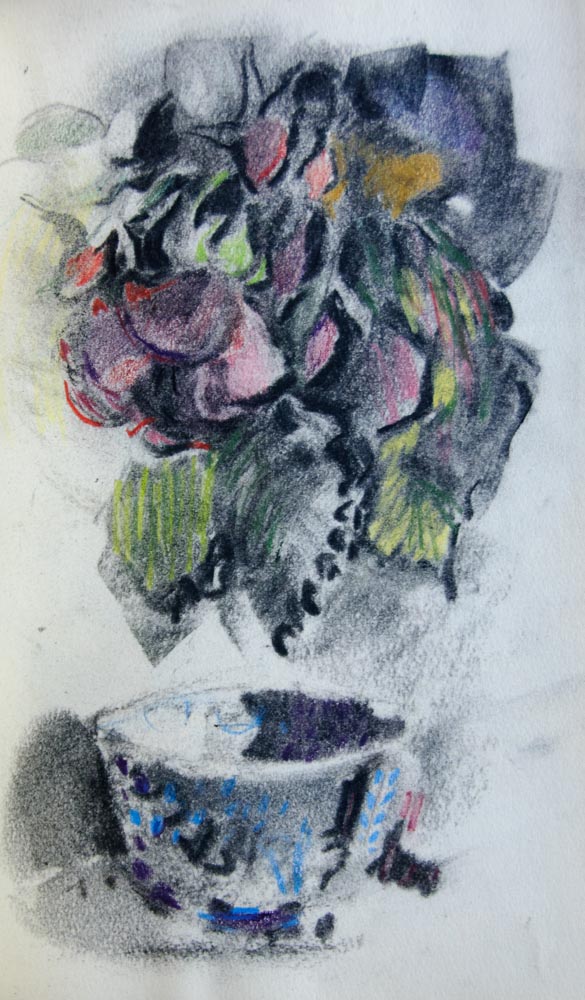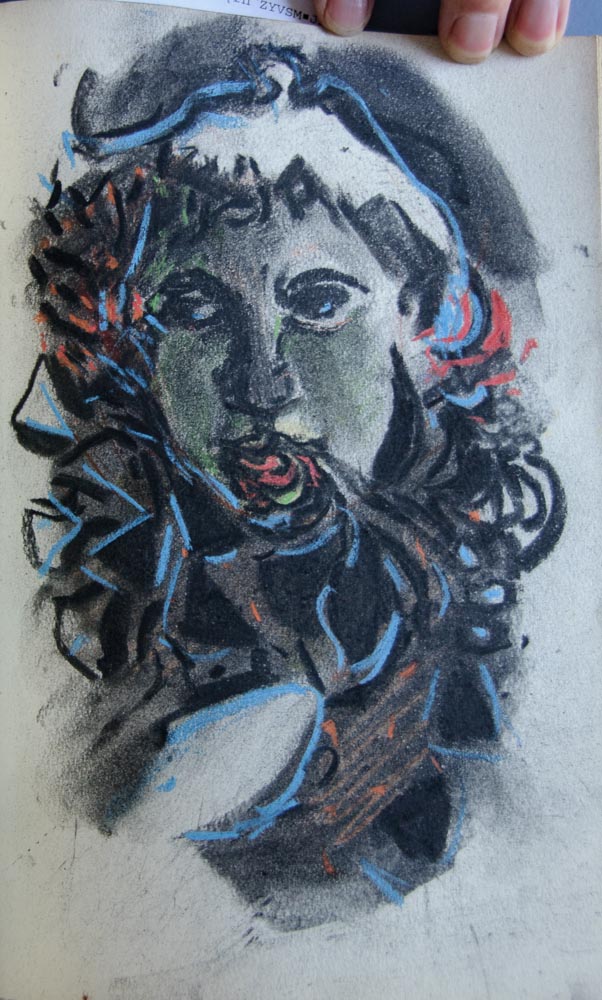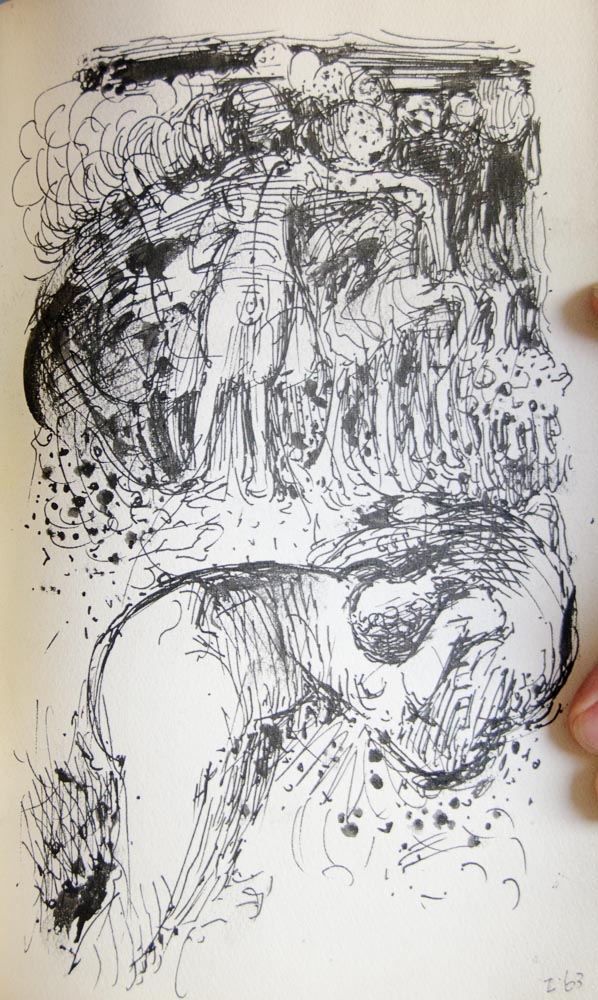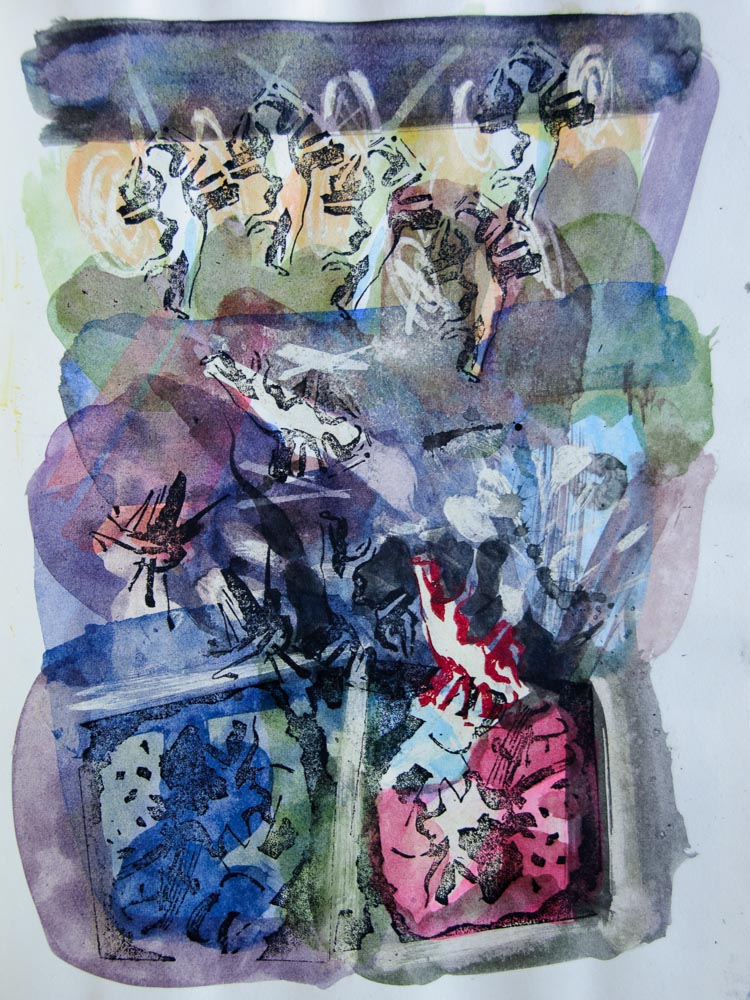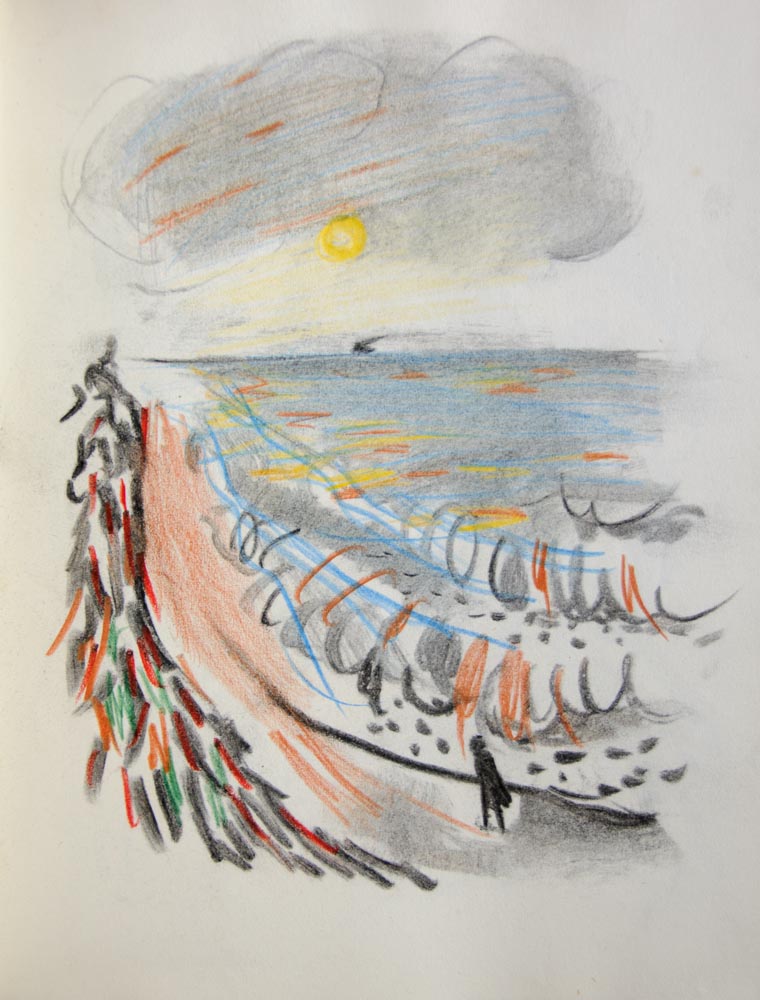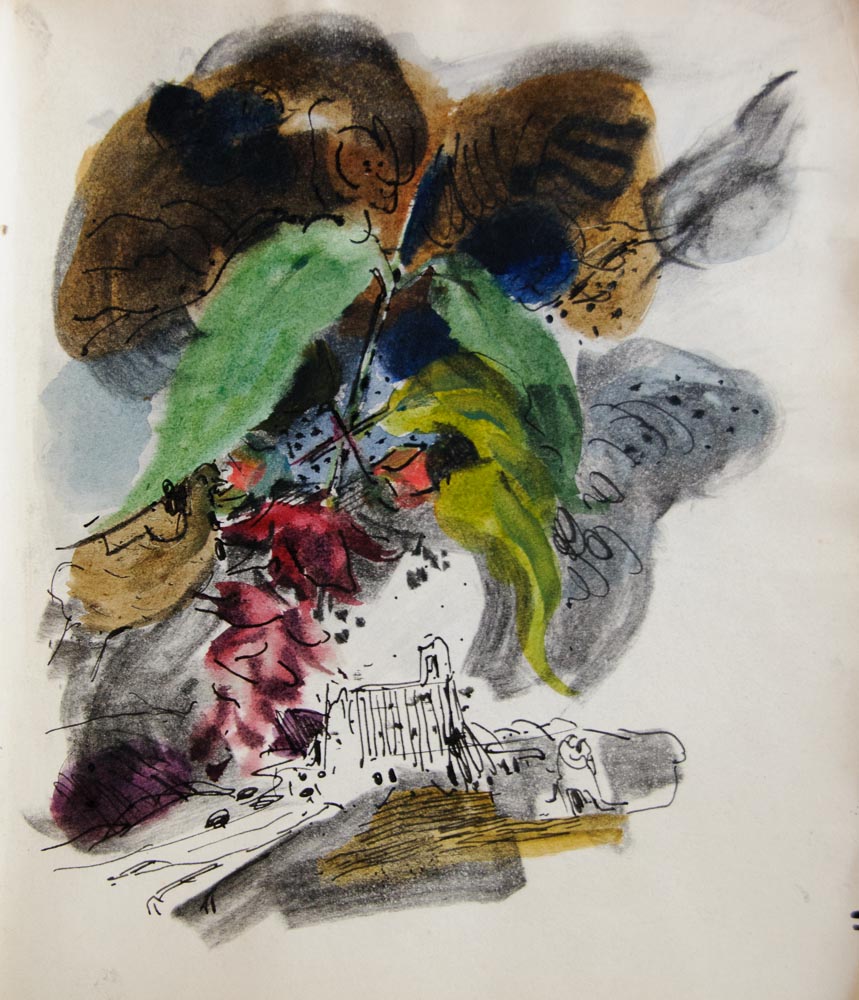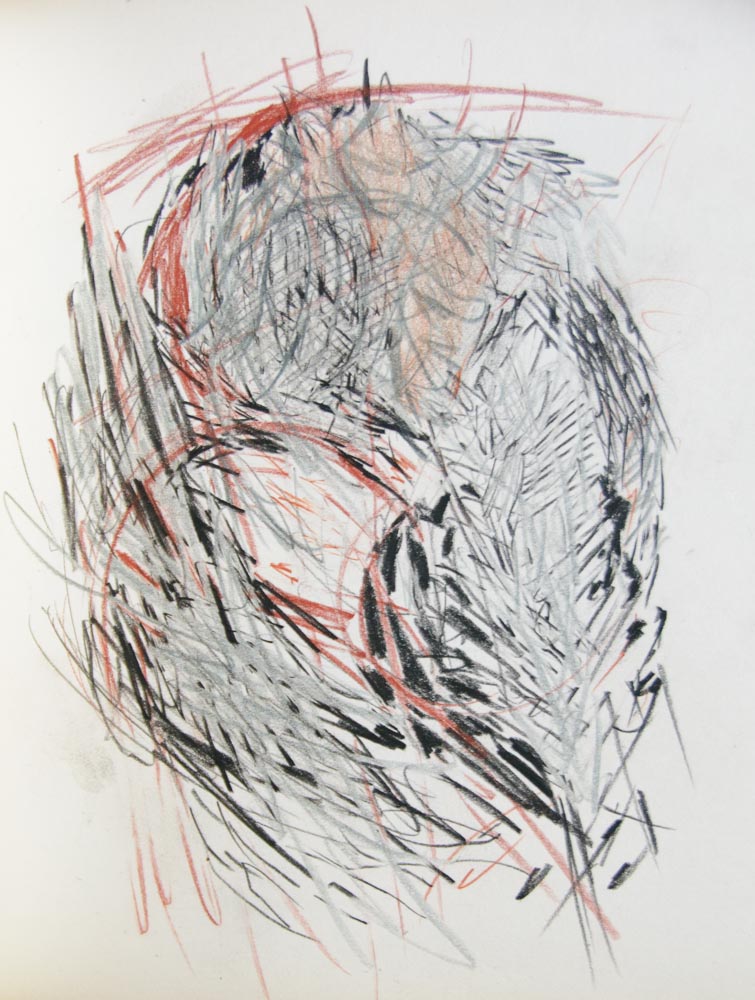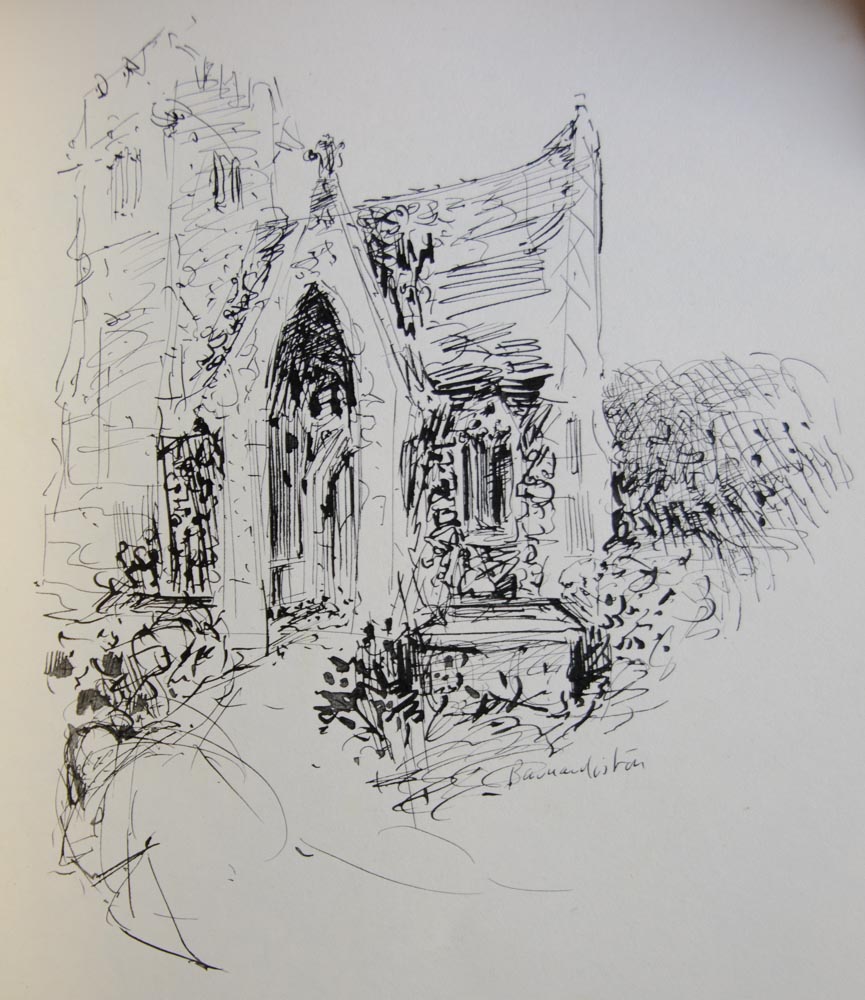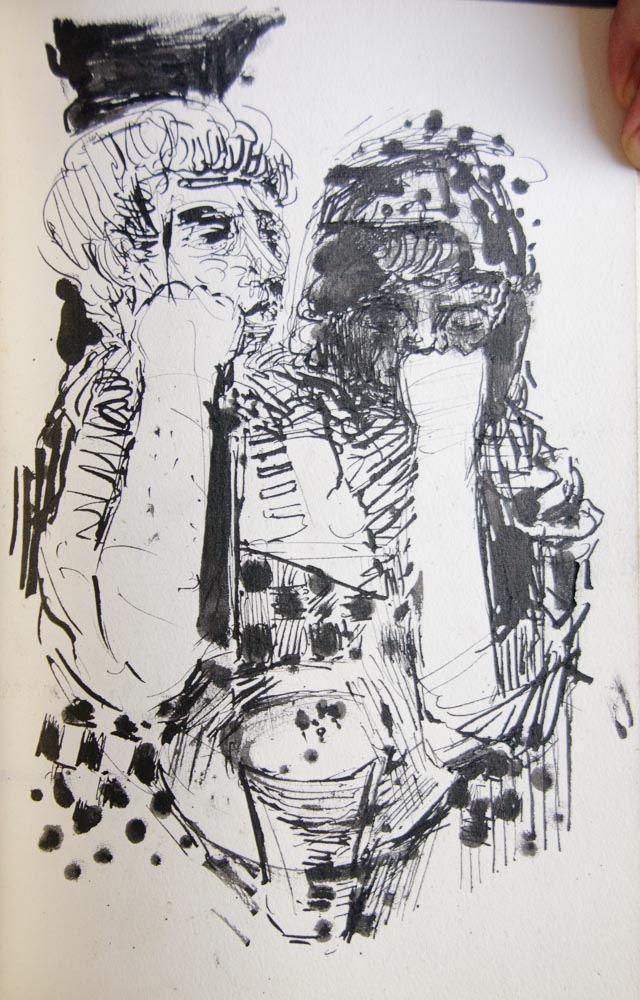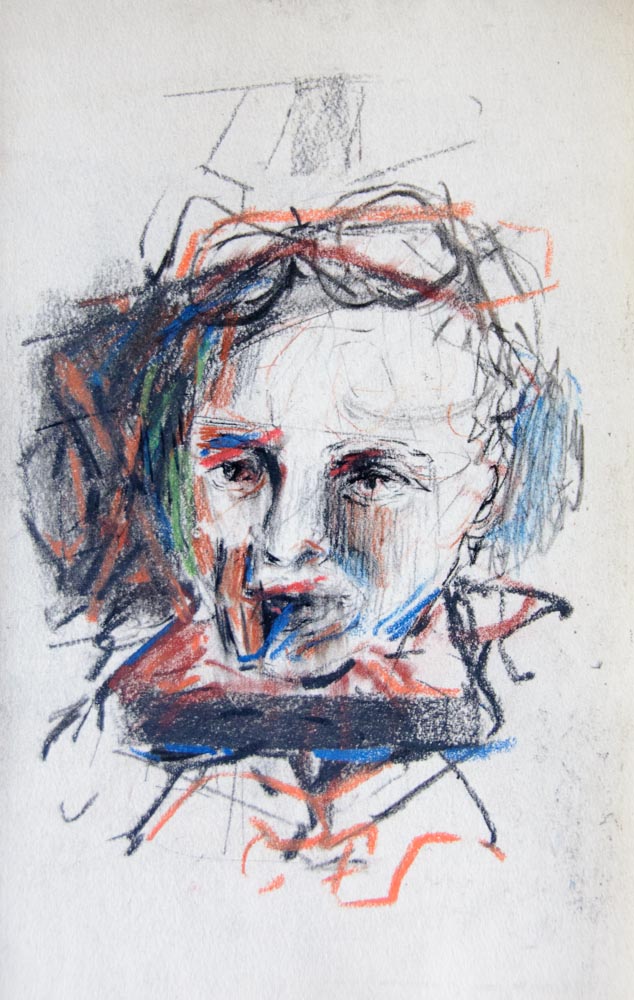Small sketchbooks from 1939 to 1944 in the Olive Cook Papers show a similarly diverse range of subjects, including animals, buildings, beaches, townscapes, landscapes, portraits, still lives, figure studies and domestic interiors. Three subjects are of particular note. First, mother and baby scenes dating from the early 1940s, which we take to be Rosemary and Martin. Second, London scenes, such as musicians, bombed buildings, barrage balloons, a pub interior and sleepers in the underground. Third, many, many cats. Fourth, fantasies, including fantasy, gothic Gormanghast like buildings, and sensual chimerical cat-women.
Edwin Smith Notebook Pages
In both paintings and drawings there is a hint of mystery, something reflected in a feature of the work that struck several interviewees – their titles. Alice Roughton said, ‘I’ve got two of his drawings, one is The Man Bemused with Geometry…..The Man Bemused with Geometry, what a wonderful title!’ Phoebe Pickard recalled an oil, Footprints in the Sand. Though not a fan of his paintings she appreciated the titles: ‘I didn’t awfully care for his drawings and pictures, but what intrigued me about them was the very poetic names he gave them.’
So, how did Edwin paint? Obsessively, in the time he had available, it seems.Mrs Donald Horwood recalled Olive and Edward working in Suffolk: ‘when they came here for instance, they would paint and paint and paint the things they saw about them….. Edwin never worked from photographs, he always worked from what he’d seen or retained in his mind’s eye.’ She added that he preferred to work in private. The work in the 1939-44 sketchbooks certainly give every impression of having been done from life – with the exception of the fantasies, of course. Phoebe Pickard cooperated with him on wall decorations in the Church in Saffron Walden for a production of Job. She recollected that ‘he always went on painting, painting, painting….I’d never worked with him before and I was absolutely staggered, because it took about a month, it was a vast job. I used to go down to the church regularly and Edwin was there for about a month off and on all day.’ Phoebe Pickard recalled the obsessive approach through a conversation with Olive towards the end of Edwin’s life. ‘He would take photographs if he had to, but his whole heart, she once told me, was still in painting and drawing even when he was ill in bed every day. I know she once said, “Look”, and showed me three, small Daumier like little sketches, black on white paper, very slight, but with character, and she said, “You see these? He does at least three a day”. Since we have been in this house he has drawn every day and not one single thing has been allowed to be thrown away’. Norman Scarf, again quoting Olive, said he (Edwin) made a point of doing two drawings every day of his life. Mrs Horwood confirmed that his obsession kept him painting to the end: ‘We saw him for the last time three months before he died. We went over to Saffron Walden and he’d been sitting in the sun painting the sunset, he was plainly very ill, but so obviously still himself.’ Norman Scarfe recalled, ‘Olive says that the drawings that he did when he really hadn’t long to live had an apocalyptic sort of quality, they were really very remarkable.’
So, how did Edwin paint? Obsessively, in the time he had available, it seems.Mrs Donald Horwood recalled Olive and Edward working in Suffolk: ‘when they came here for instance, they would paint and paint and paint the things they saw about them….. Edwin never worked from photographs, he always worked from what he’d seen or retained in his mind’s eye.’ She added that he preferred to work in private. The work in the 1939-44 sketchbooks certainly give every impression of having been done from life – with the exception of the fantasies, of course. Phoebe Pickard cooperated with him on wall decorations in the Church in Saffron Walden for a production of Job. She recollected that ‘he always went on painting, painting, painting….I’d never worked with him before and I was absolutely staggered, because it took about a month, it was a vast job. I used to go down to the church regularly and Edwin was there for about a month off and on all day.’ Phoebe Pickard recalled the obsessive approach through a conversation with Olive towards the end of Edwin’s life. ‘He would take photographs if he had to, but his whole heart, she once told me, was still in painting and drawing even when he was ill in bed every day. I know she once said, “Look”, and showed me three, small Daumier like little sketches, black on white paper, very slight, but with character, and she said, “You see these? He does at least three a day”. Since we have been in this house he has drawn every day and not one single thing has been allowed to be thrown away’. Norman Scarf, again quoting Olive, said he (Edwin) made a point of doing two drawings every day of his life. Mrs Horwood confirmed that his obsession kept him painting to the end: ‘We saw him for the last time three months before he died. We went over to Saffron Walden and he’d been sitting in the sun painting the sunset, he was plainly very ill, but so obviously still himself.’ Norman Scarfe recalled, ‘Olive says that the drawings that he did when he really hadn’t long to live had an apocalyptic sort of quality, they were really very remarkable.’
